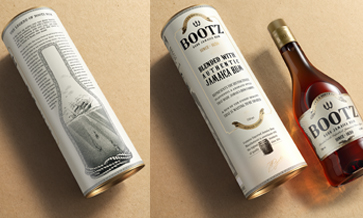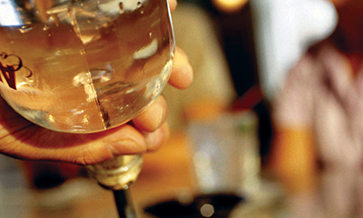From innovation to extinction and back, the art of mixing drinks is now a ‘crafted’ and revered experience
If the cocktail could ever get on stage and tell the story of its creation, growth, development and celebration through the centuries, it would be quite something. It would be a quintessential rags-to-riches story befitting the greatest of cinematic potboilers, spanning two continents and three centuries.
It would be the story of the birth of one nation and the decay of another. It would be a story of adventure and discovery; of love and passion; of serendipity and human ingenuity; but above all it would be a story of necessity and survival.
Such is the often overlooked, earnestly debated, constantly evolving story of the cocktail, necessitated by humanity’s unrelenting thirst for alleviating their surroundings. It followed the development of society to become the very symbol of human pursuit, exemplifying at once both its achievement in craft as well as its precipitous rise to hedonism.
The first cocktails, or mixing of drinks, in the New World were done less to demonstrate refinement and more to make imbibing the spirit more conducive, given that adulteration was rampant and quality control around the turn of the 18th-century America wasn’t exactly a thing.
Although arising from such dubious provenance, it did not take long for mixed drinks to become a preferred way to take in one’s ration of the spirits. It soon was a staple of the swish set; becoming the social lubricant of choice in any gathering by the late 1800s.
Body blow
The cocktail had become fashionable and glamorous now – an embodiment of indulgence far removed from its gritty beginnings. Yet, much like its effect, its heady success didn’t last too long. Prohibition in the US in the early 1900s dealt the biggest body blow to its heart and soul, sending all innovation and evolution packing back by 100 years.
Much of the talent pool was lost to countries where cocktail consumption was still legal and, more pertinently, the focus shifted from perfection to preservation, where turnaround time, evading the law and staying alive were more critical. Once again, just like a century ago, cocktails became a way to mask the poor quality of the alcohol and make it more palatable.
Such was the impact of the Prohibition on the psyche of the spirits and cocktail industry that it has since become a major reference point for the entire category.
By the time Prohibition was repealed, drinking culture had changed irrevocably.
Whatever fruit and syrup laden decadence was brought about in the post-Depression, post-War years, was completely drowned by the vodka epidemic that plagued the US from the 1970s (ironically) until well into the early 2000s.
Cocktails had become a pale shadow of their artful, innovative selves. Drinks were no longer imbibed for appreciation, rather they were catalysts consumed more for their effect than for the combined taste of the alcohol with other embellishments. Few ordered classic cocktails, even fewer knew how to make them.
Craft revolution
Looking back, perhaps this was a much-needed reset. The excesses of the industrial food age provided the impetus for the “craft” revolution that has swept all aspects of consumption in the new millennia.
Further bolstered by heavy doses of nostalgia (and some mad men too), the art came roaring back into the cocktail scene in the 2000s, with the clubs and discotheques making way for the new wave of speakeasies and mixology focused bars as the bon-vivant’s destination of choice.
Bartenders were no longer just tending the bar but were accomplished artisans in their own right, not content with simply recreating forgotten classics but aching to push the mixology movement yet forward through their persistent experimentation and interpretation of the art of imbibing. Just the heady set of ingredients needed to usher in the golden age of cocktails!
The origin of the word ‘cocktail’ is a mix of fact, fiction and folklore. The first recorded use of the word was found in England, in 1798. However, the Oxford English Dictionary cites the word as originating in the US with the first reference in 1803.
It further defines a cocktail as “an alcoholic drink consisting of a spirit or spirits mixed with other ingredients such as fruit juice or cream”. A cocktail usually contains a spirit, sugar, water and bitters or citrus. When a mixed drink contains only a distilled spirit and a mixer, such as soda or fruit juice, it is a highball.
Name game
Cocktails were originally named very literally after the main/base spirit that they were made of: hence the whiskey cocktail, the brandy cocktail, the sherry cobbler and so on. As the concoctions evolved in innovation and ingenuity, so did their names.
They began to be named after who conceived them (John Collins, White Lady, Black Russian), where they were conceived (Manhattan, Sazerac, Clover Club, Sidecar) and how they were conceived (Between The Sheets, Sex On The Beach, etc.)
The last part is probably not true but, etymology aside, they were all still very much conforming to the original formulation of spirit, sugar, water, bitters (and maybe mixer/liqueur), which was the classical method of mixing drinks in the 1800s.
The first publication of a bartenders’ guide, which included cocktail recipes, was in 1862: How to Mix Drinks: The Bon Vivant’s Companion, by “Professor” Jerry Thomas. In addition to recipes for punches, sours, slings, cobblers, shrubs, toddies, flips, and a variety of other mixed drinks were 10 recipes for “cocktails”.
A key ingredient differentiating cocktails from other drinks in this compendium was the use of bitters. Mixed drinks popular today that conform to this original meaning of cocktail include the Old Fashioned whiskey cocktail, the Sazerac and the Manhattan cocktail.
Old Fashioned
The Old Fashioned whisky cocktail is arguably the grandfather of most modern cocktails – classical yet perennially reinvented. It is simple and straightforward; yet that simplicity is what lends it its versatility.
The Old Fashioned was not always called so. Its given name, as recorded by Jerry Thomas, was a very literal Whiskey Cocktail. Its breakaway success, however, sparked an effort by bartenders to make their version of the whiskey cocktail stand out.
To capitalise on the newly arriving spirits from Europe, bartenders began to adulterate the cocktail with all kinds of liqueurs, from absinthe to curacao. They called these the “improved whisky cocktails”. Ordering a simple Whiskey Cocktail became harder until patrons began asking for an “old fashioned” version the way it used to be made: whiskey, sugar, bitters.
The Old Fashioned is a cocktail made by muddling sugar with bitters, then adding alcohol, originally whiskey, but now sometimes brandy, and, finally, a twist of citrus rind. It is traditionally served in a short, round, tumbler-like glass, which is called an Old Fashioned glass, after the drink.
The Manhattan
A Manhattan is a cocktail made with whisky, sweet vermouth and bitters. While rye is the traditional whisky of choice, other commonly used whiskies include Canadian whisky, bourbon, blended whisky and Tennessee whisky.
The cocktail is usually stirred, then strained into a cocktail glass and garnished with a Maraschino cherry. A Manhattan may also be served on the rocks in a lowball glass.
The whisky-based Manhattan is one of five cocktails named for a New York City borough. It is closely related to the Brooklyn cocktail, which uses dry vermouth and Maraschino liqueur in place of the Manhattan’s sweet vermouth, and Amer Picon in place of the Manhattan’s Angostura bitters.
The Sazerac
This is a local New Orleans variation of a cognac or whisky cocktail, named for the ‘Sazerac de Forge et Fils’ brand of cognac brandy that served as its original main ingredient. The drink is most traditionally a combination of cognac or rye whisky, absinthe, Peychaud’s bitters, and sugar, although bourbon whiskey or Herbsaint are sometimes substituted.
Some claim it is the oldest known American cocktail, with origins in pre-Civil War New Orleans. But drink historian David Wondrich is among those who dispute this, and American instances of published usage of the word cocktail to describe a mixture of spirits, bitters, and sugar can be traced to the dawn of the 19th century.
Mint Julep
If bourbon is America’s national drink, then the Mint Julep has to be its national cocktail. A summer staple that comes to life every May during the Kentucky Derby, the enthusiasm for the drink is rivaled only by their enthusiasm for hats on that day!
In 1938, the mint julep became the official drink of the Kentucky Derby, but was actually invented in Virginia, where many took it as medicine for stomach ailments.
The word ‘julep’ derives from the Spanish Arabic ‘julepe’ and from ‘goláb’, the Persian word for rosewater. Originally made with brandy or rum, this Southern favourite nears perfection when bourbon is used as the spirit of choice and is imbibed in close proximity to the thundering echoes of hooves pounding their way to the finish line.














